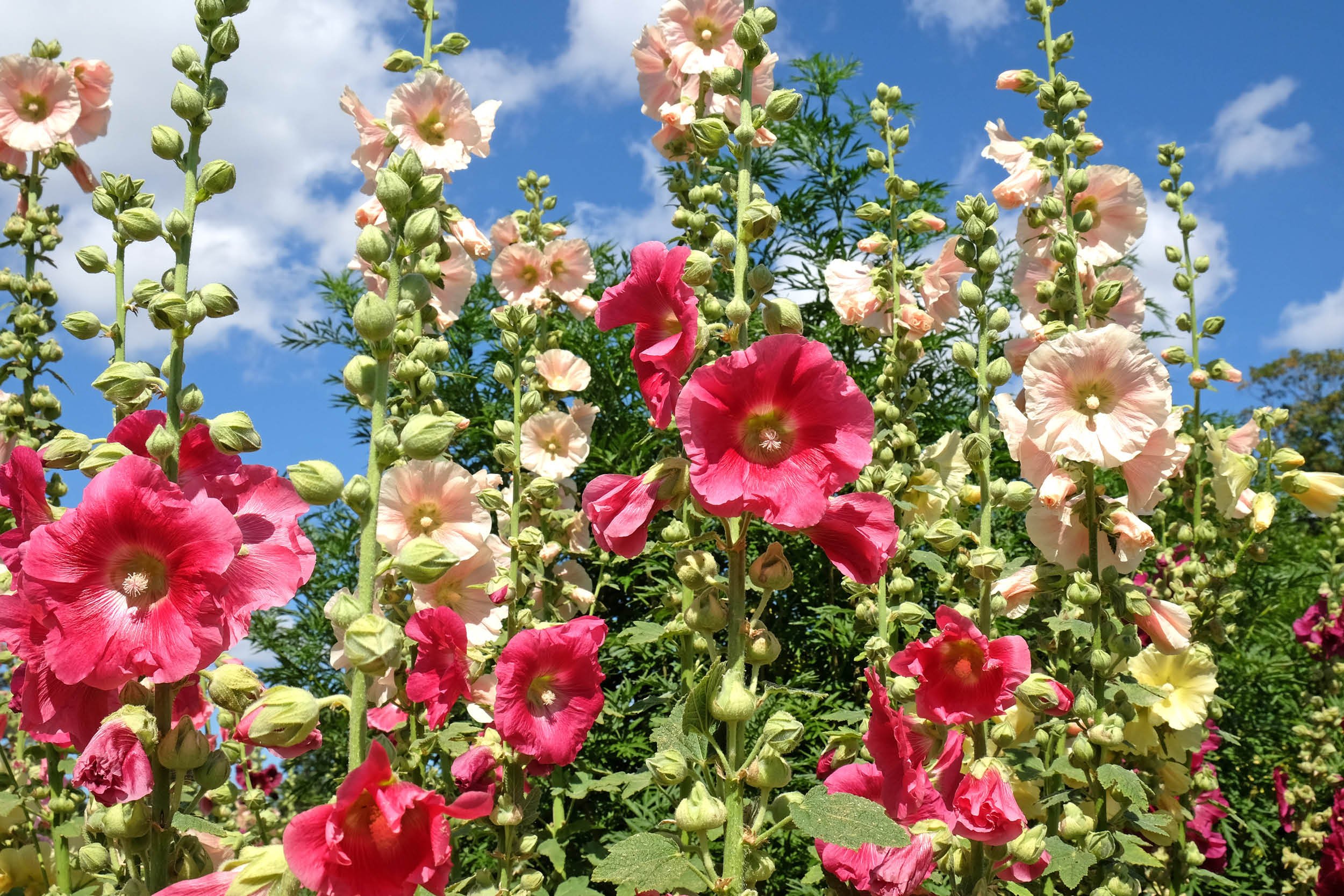Annuals, Perennials, and Biennials... Oh My! Understanding Plant Longevity
Plants are a lot like people: each is unique in characteristics and appearance and tends to thrive in different conditions. As we look at some of our favorite plants, we can characterize their life cycles as annual, perennial, or biennial. So, what does that mean? And where does your favorite fall? Our Garden Center staff at Copper Creek in Nisswa help explain.
Annual Plants
Annual plants complete their life cycle within one year. They germinate, grow, flower, set seed, and die all within a single growing season. Examples of annual plants include marigolds, zinnias, petunias, and tomatoes. In Minnesota's climate, where winters are cold and summers are warm, there are several annual plants that thrive. Here are some popular choices:
Zinnias (Zinnia spp.)
Zinnias are colorful and easy-to-grow annual flowers that bloom throughout the summer. They come in a variety of colors and sizes, making them versatile for garden beds, borders, and containers.
Marigolds (Tagetes spp.)
Marigolds are sun-loving annual flowers that are known for their bright, cheerful blooms. They are drought-tolerant and can withstand the hot summers of Minnesota.
Petunias (Petunia spp.)
Petunias are popular annual flowers that come in a wide range of colors, sizes, and patterns. They are heat-tolerant and bloom continuously throughout the summer, adding vibrant colors to garden beds and containers.
Cosmos (Cosmos bipinnatus)
Cosmos are tall, airy annual flowers with delicate, daisy-like blooms. They are easy to grow from seed and attract pollinators like bees and butterflies.
Snapdragons (Antirrhinum majus)
Snapdragons are cool-season annuals that can tolerate the cooler temperatures of Minnesota in spring and fall. They come in a variety of colors and add vertical interest to garden beds and borders.
Alyssum (Lobularia maritima)
Alyssum is a low-growing annual flower with clusters of small, fragrant blooms. It is often used as a ground cover or in containers, and it attracts beneficial insects like hoverflies and lacewings.
Perennial Plants
Perennial plants live for multiple years, often coming back year after year from the same root system. They typically have a period of dormancy during the winter months, and then regrow in the spring. Examples of perennial plants include roses, tulips, daffodils, hostas, and many types of trees and shrubs.
Perennial plants that are well-suited to Minnesota's climate are those that can tolerate cold winters, fluctuating temperatures, and sometimes even heavy snowfall. Here are some perennial plants that thrive in Minnesota:
Purple Coneflower (Echinacea purpurea)
Purple coneflower is a native perennial with striking purple-pink flowers that attract pollinators like bees and butterflies. It is drought-tolerant and easy to grow, making it a popular choice for Minnesota gardens.
Black-eyed Susan (Rudbeckia hirta)
Black-eyed Susan is another native perennial with bright yellow flowers and dark centers. It blooms throughout the summer and is tolerant of a wide range of growing conditions.
Hostas (Hosta spp.)
Hostas are shade-loving perennials that are prized for their lush foliage in various shades of green, blue, and variegated patterns. They are excellent for adding texture and interest to shady areas of the garden.
Daylilies (Hemerocallis spp.)
Daylilies are hardy perennials with colorful, trumpet-shaped flowers that bloom in summer. They come in a wide range of colors and are low-maintenance, making them popular for Minnesota gardens.
Russian Sage (Perovskia atriplicifolia)
Russian sage is a drought-tolerant perennial with aromatic gray-green foliage and spiky clusters of lavender-blue flowers. It thrives in sunny locations and adds a graceful, airy texture to the garden.
Sedum (Sedum spp.)
Sedums, also known as stonecrops, are drought-tolerant perennials with succulent foliage and clusters of star-shaped flowers. They come in various heights and colors and are excellent for rock gardens, borders, and ground covers.
Astilbe (Astilbe spp.)
Astilbes are shade-loving perennials with feathery plumes of flowers in shades of pink, red, white, and lavender. They thrive in moist, well-drained soil and add a splash of color to shady areas of the garden.
Biennial Plants
"Biennial" and "biannual" are terms often confused due to their similarity, but they have distinct meanings in botany:
Biennial Plants
These plants complete their life cycle in two years. In the first year, they typically grow vegetatively, forming roots, stems, and leaves. In the second year, they produce flowers, set seeds, and then die. Examples of biennial plants include Hollyhocks and Forget-Me-Nots.
Biannual Plants
This term isn't commonly used in botany. However, if it were to mean anything, it would imply plants that undergo a significant event or cycle twice a year. However, it's more likely a typographical error or a misuse of the term.
Twice as Nice
Biennial plants have a two-year life cycle, and in Minnesota's climate, they need to withstand both cold winters and warm summers. These biennial plants can add beauty and interest to Minnesota gardens with their unique growth habits and charming flowers:
Foxglove (Digitalis purpurea)
Foxglove is a biennial plant with tall spikes of bell-shaped flowers in shades of pink, purple, white, and yellow. It prefers partial shade to full sun and well-drained soil, making it suitable for various garden conditions.
Hollyhock (Alcea spp.)
Hollyhocks are biennial plants known for their tall spikes of colorful flowers, which come in shades of pink, red, white, yellow, and purple. They thrive in full sun and well-drained soil and can add vertical interest to garden borders and cottage gardens.
Forget-Me-Not (Myosotis spp.)
Forget-me-nots are biennial plants with delicate clusters of small, blue flowers with yellow centers. They prefer moist, shady conditions and can self-seed to form naturalistic drifts in woodland gardens.
Understanding the life cycle of plants is important for gardening, agriculture, and landscaping, as it helps in planning crop rotations, selecting appropriate plants for specific growing conditions, and maintaining a balanced garden ecosystem.
Take advantage of the Copper Creek Garden Center team’s expertise to tend to your gardening needs on a one-time basis or schedule them to take care of your plants all summer long. Contact us to set up an appointment. Or stop in and walk through our ever-growing greenhouse to find the perfect plants for your home and garden.



















